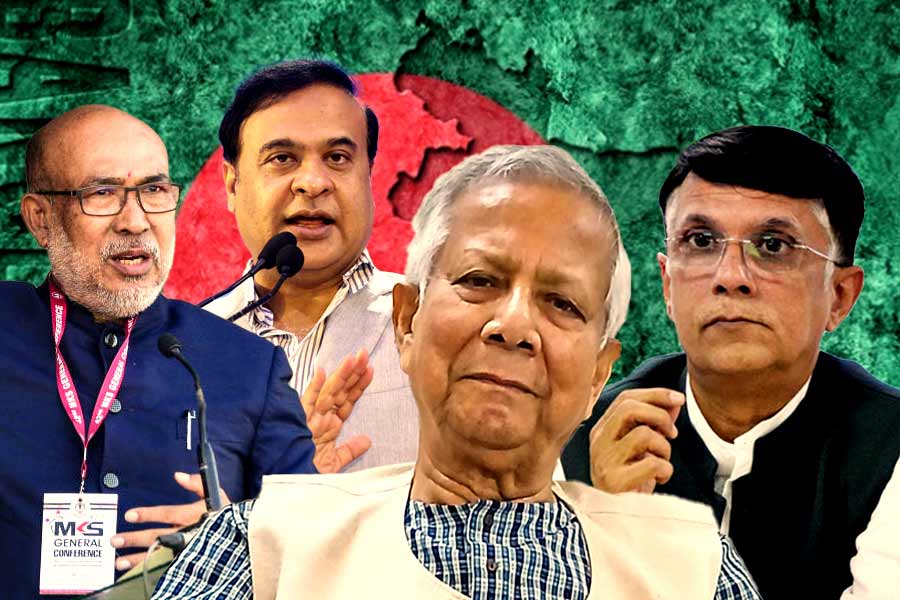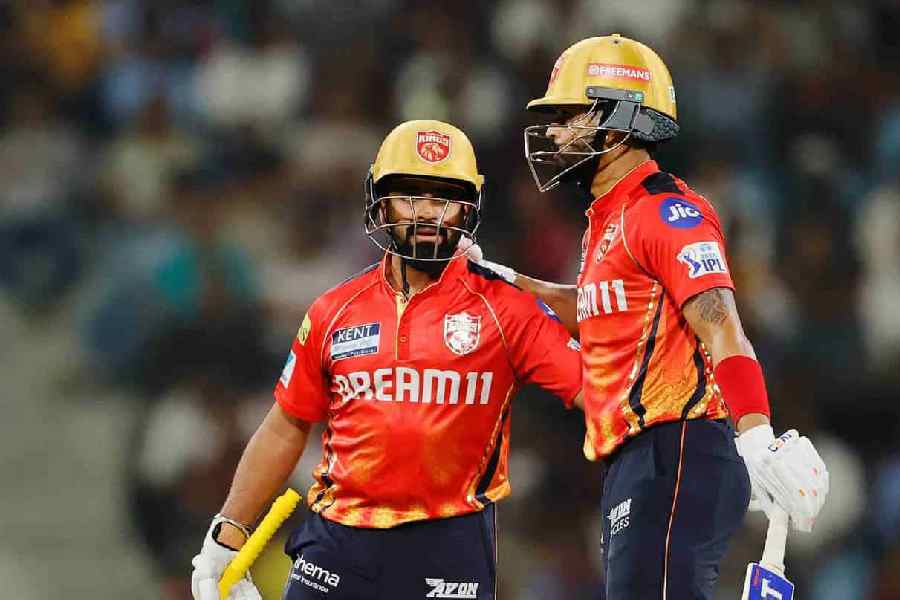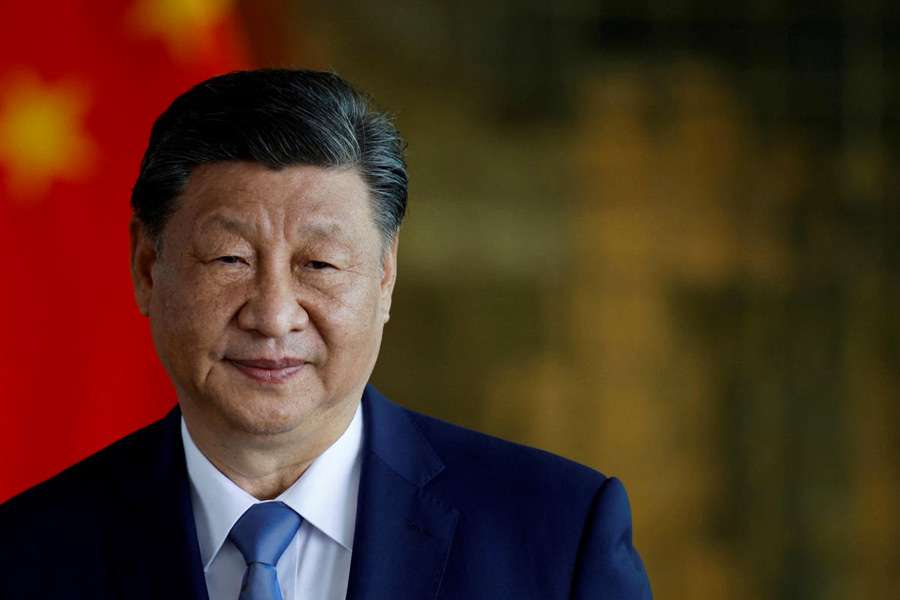 |
The brilliant career of Siddhartha Ghosh comes to an abrupt end. Soumitra Das traces his talent for writing the history of technology and his passion for words
It is possible to form a fairly good idea of Siddhartha Ghosh's range and variety of interests and the spectrum of subjects on which he had either published his own works or edited the writings of others from the essays and book projects aborted by his sudden and untimely death on October 31. Had the man whose real name was Amitabha (Siddhartha, somebody rightly said, was his nom de guerre) lived a couple of months more, his work would have reached an international audience.
Some time next year, Permanent Black would have published his longish essay titled Abol tabol: The making of a book, on Sukumar Ray and his father Upendrakishor and the anthology Abol tabol. The fantastical and humorous verse it contained was originally published in the magazine Sandesh, edited by U. Ray, writer of such children's classics as Goopy Gyne Bagha Byne.
Even if we do not believe in premonitions, it must be admitted that Siddhartha's lines on the last poem in Abol tabol were equally applicable to his death. 'It is not just the last poem in Abol tabol that anticipates Sukumar's imminent death, but also the last graphic added to the last page of the dummy. A splash of ink from his pen – like splash of blood on the page – contained the word `samapta' (the end).'
It was as if Siddhartha, who had been bed-bound for nearly a year and a half after he fractured his leg and perhaps despaired of ever standing on his own two feet again, could see that his end was near. Perhaps not uncannily, the paper on Satyajit Ray's book covers he had read earlier this year at a seminar on book history organised at Jadavpur University, contained the same lines. This essay on Sukumar Ray is part of a larger project on our country's publishing history jointly being edited by Swapan Chakravarty and Abhijit Gupta, both of whom teach English at Jadavpur University.
There were other major projects that he left unfinished. Siddhartha, who had a life-long interest in the history of technology and science and the personae involved during British rule, and whose special area of interest was early photography in our city and country, had helped set up the section on photography in the visual archive created by the Centre for Social Studies, to which he was affiliated as an independent scholar in the last years of his life. Art historian Tapati Guha Thakurata, who was in charge of creating the archive, says: 'He was crucial to the expansion of the archive. I am entirely indebted to him for opening it.' The Centre has documented about 200 photographs in his prodigious collection dating back to the 1870s and the 1920s.
This is only to be expected of the man who had written the seminal and pathbreaking book, Chhabi Tola – Bangalir photography charcha, the first of its kind in Bengali published by Ananda. Like all his other publications this title was a sound and authoritative piece of scholarship and was exhaustively and painstakingly researched and documented. It carried some outstanding photographs of Bankim Chatterjee in his youth, the actress Binodini embracing a heavily jowled man, the pioneering Hemendramohan Basu with his stereoscopic camera, the familiar portraits of Michael Madhusudan and Vidyasagar, portraits by Maharaja Birchandra of Tripura and a self-portrait of Annapurna Datta, the first Bengali woman to earn her living by taking photographs.
The Centre has also a large collection of old Bengali journals and magazines, and Siddhartha had selected several articles that appeared in them on the theme of technology. What he was unable to do was to write the introduction.
He also envisaged publishing translations of Upendrakishor by his grandson Satyajit, where the original illustrations would have been juxtaposed with new pictures by artist Debashish Deb along with the texts in Bengali and English.
There were, besides, several other smaller essays he had planned to write. Some were in nascent form. His childhood friend, senior IAS officer, Prasadranjan Ray, says they had both planned books on six pioneers of technology, of which three are ready. Publishers in Sweden had taken an interest in Siddhartha's science fiction and he was planning to get them translated into English or to brush up his own translations. He had also expressed a desire to write a longer version of his essay, The pre-commercial era of wax cylinder recordings in India, by appending new material. It had appeared in the annual volume of The Record News, The Journal of the Society of Indian Record Collectors in 1999.
Siddhartha had recently brought out through the publishing house Subarnarekha the immensely popular facsimile editions of Abol tabol, Ha Ja Ba Ra Law and Tuntunir boi. By next book fair, his other venture, a facsimile edition of Pagla Dashu with the original cover by Satyajit Ray, the first ever designed by him, will be out too.
Siddhartha was born on October 15, 1948 and went to Ballygunge Government High School. He passed out as a mechanical engineer from Jadavpur University in 1971. Left-inclined he joined the Naxalite movement and lost a year. Instead of getting bogged down in a nine-to-five job, he first joined the Birla Industrial and Technological Museum, followed by stints at the Central Glass and Ceramics Research Institute and the National Institute of Science Technology and Development Studies.
From childhood, Siddhartha was interested in writing and editing, and he was inspired by Kshitindramohan Bhattacharya of Bangiya Shishu Sahitya Parishat. The early Seventies saw his first published work. He edited a translation of leftist works and Jack London.
Devoted to the movement to popularise science he published through Shaibya Prakashan mathematical puzzles such as Anka Atanka noi, Majar khela anka, Jukti Buddhi IQ and Lewis Carroler Dhanda Sam Loyeder Anker Dhanda.
Other significant works were Kaler Shahar Kolkata, on the industrial and technological history of India and Karigari Kalpana O Bangali Udyog, a case study of five Bengali entrepreneurs with an introduction by Satyajit Ray, who always encouraged him.
Siddhartha wrote science fiction extensively and in 1992, he was invited to Fantastica 92 on sci-fi in Stockholm. The same year, he presented a paper on the steam engine to the swadeshi car at Uppsala. However, he was deeply unhappy in private life. His friends and admirers should try to preserve the legacy of Siddhartha Ghosh.











